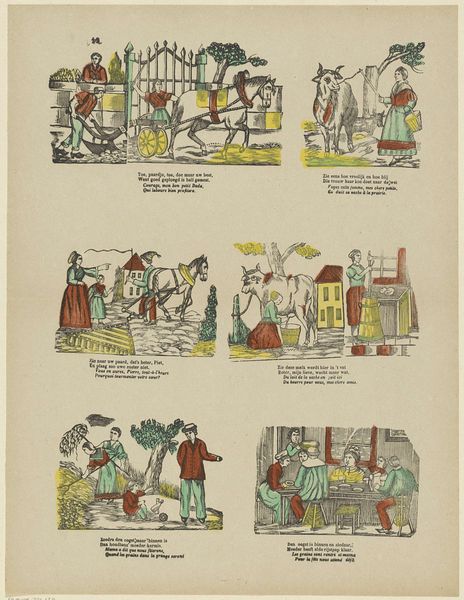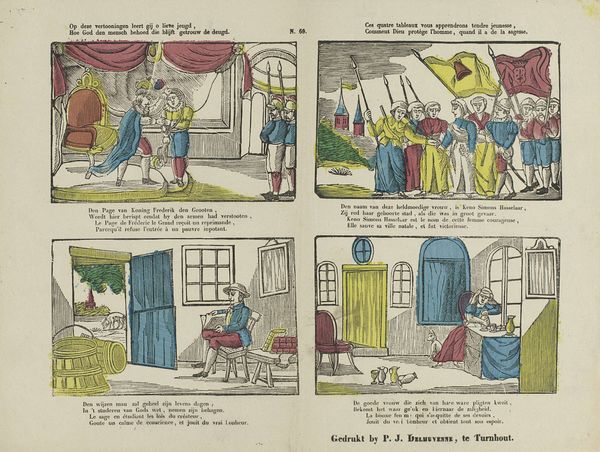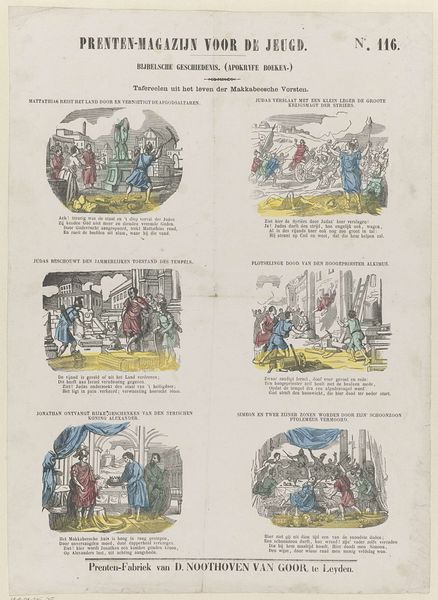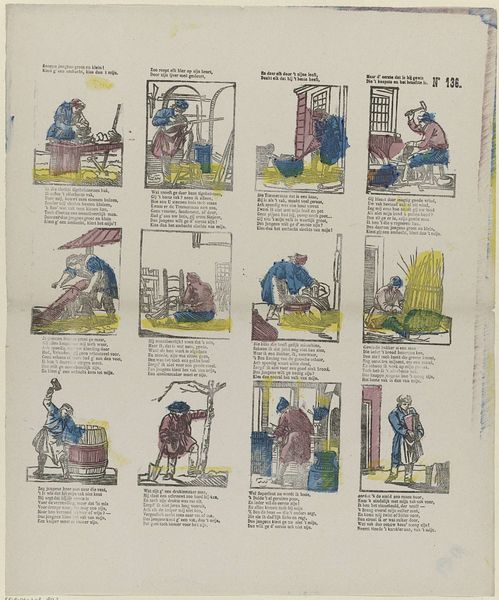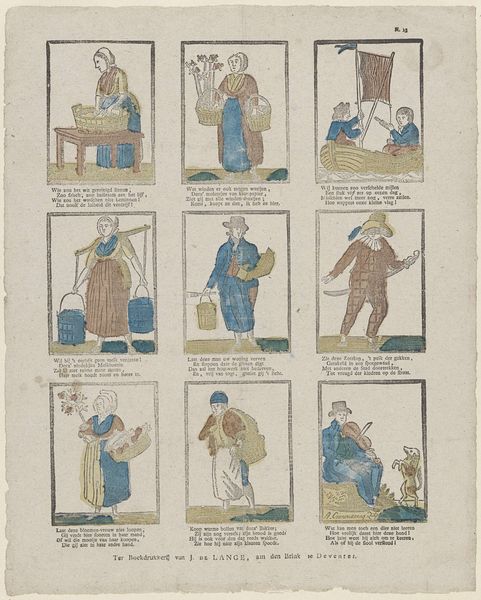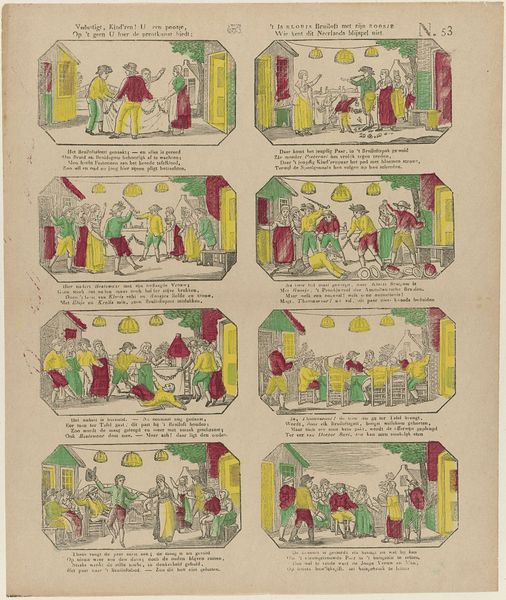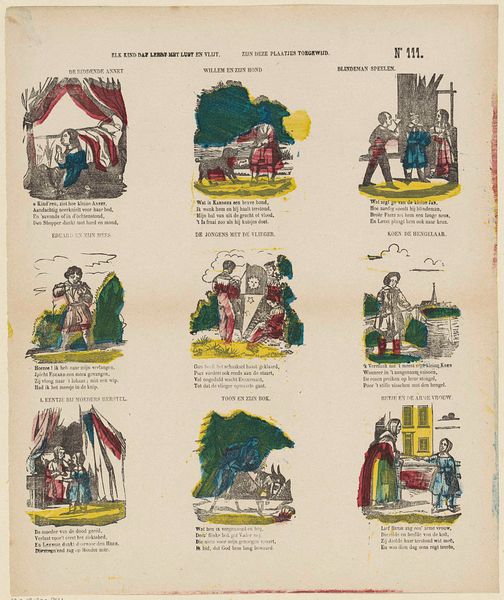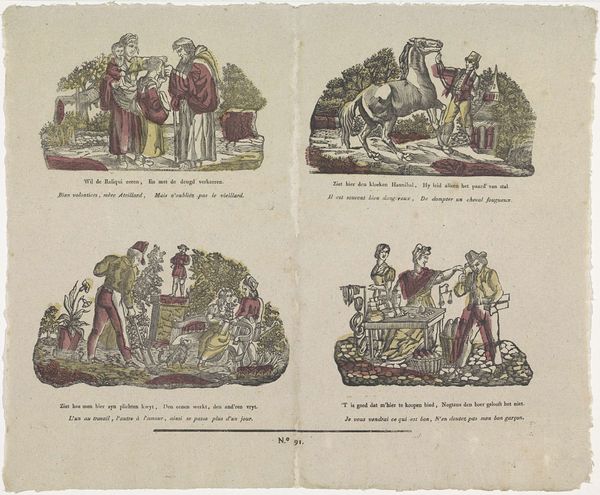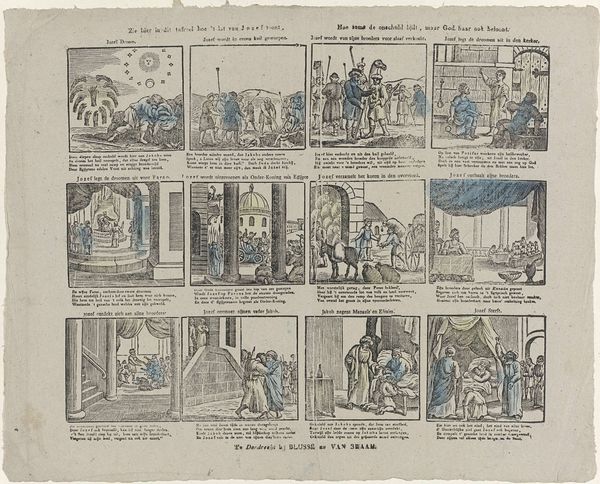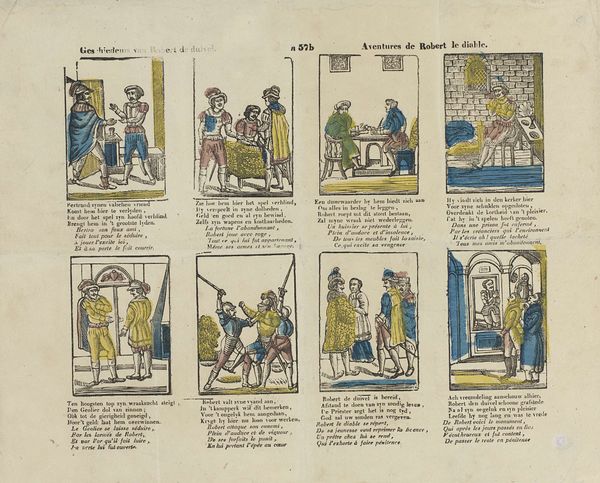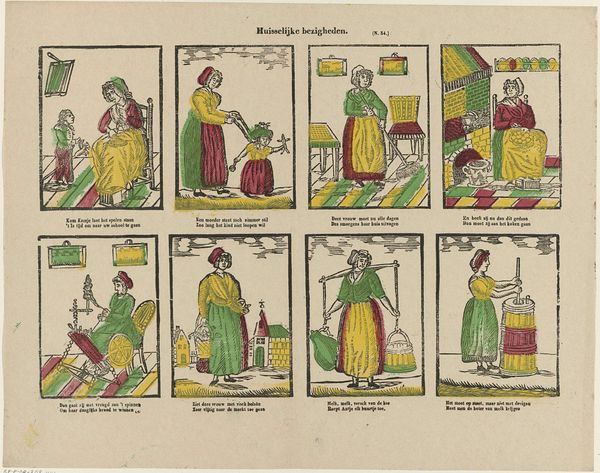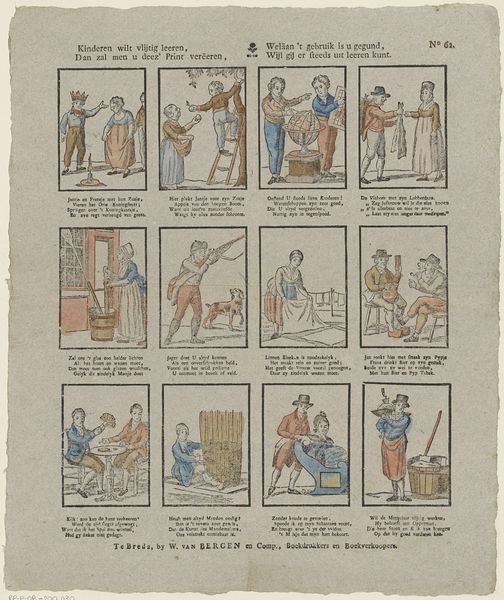
drawing, print, etching, paper, ink, engraving
#
drawing
#
comic strip sketch
#
aged paper
#
narrative-art
# print
#
etching
#
sketch book
#
traditional media
#
paper
#
personal sketchbook
#
ink
#
sketchwork
#
journal
#
folk-art
#
comic
#
sketchbook drawing
#
genre-painting
#
storyboard and sketchbook work
#
sketchbook art
#
engraving
Dimensions: height 326 mm, width 401 mm
Copyright: Rijks Museum: Open Domain
Curator: Let’s discuss this print titled "Vragen en antwoorden / Demandes et responses," created between 1842 and 1856 by P.J. Delhuvenne. It’s a work combining etching and engraving, organized into a series of small, narrative scenes reminiscent of a comic strip. Editor: My initial impression is that it has a charmingly rough quality. The individual scenes, although simply rendered, are so dynamic! I love the visual storytelling. Curator: Exactly. Delhuvenne’s work can be understood through its materials—paper, ink, and the printing process. The relative affordability of prints allowed such narratives to circulate amongst a broad audience, effectively democratizing visual storytelling during this period. The production and consumption of these images reflects the social conditions of the time. Editor: I see it as offering glimpses into everyday life and concerns of 19th-century society. Each vignette poses a question and answer, some humorous, others perhaps hinting at social critiques, offering multiple little narratives within a larger composition. Consider the visual dialogues Delhuvenne composes between the questions posed and the status of each individual as conveyed through clothing, tools and the way each little interaction plays out. Curator: It challenges the traditional art world by making art more accessible, while giving visual and textual space to different dialects and gendered speech; it suggests a subversive and intersectional reading practice of minor art as holding valuable cultural information. Editor: Indeed. The deliberate choice of printmaking as the medium challenges this perception by turning to more common means of making art, thereby expanding what we accept as relevant for inquiry into past conditions. Curator: Examining Delhuvenne's work from the lens of gender, labor, and economics expands the critical potential for artwork assessment—shifting our perception of folk art from antiquated ephemera to that of functional political objects with agency. Editor: Looking at the print reveals not only stories from the past but also how the industrial age shaped visual communication. Understanding production offers insight into how such narrative art forms emerged and what roles the artists fulfill in contributing to society and social dialogue. Curator: It's a testament to how visual culture can preserve historical knowledge within accessible media, speaking through and for those excluded from hegemonic historical record. Editor: Absolutely; the value of something humble like this really pushes us to reconsider art’s relationship to life and labour, shifting from grand aesthetics to social history in miniature form.
Comments
No comments
Be the first to comment and join the conversation on the ultimate creative platform.

